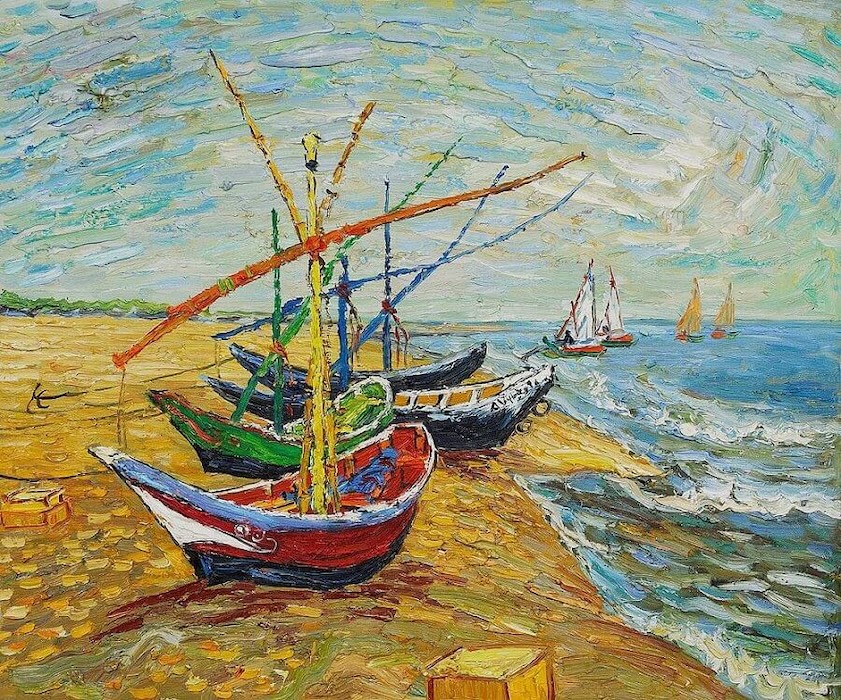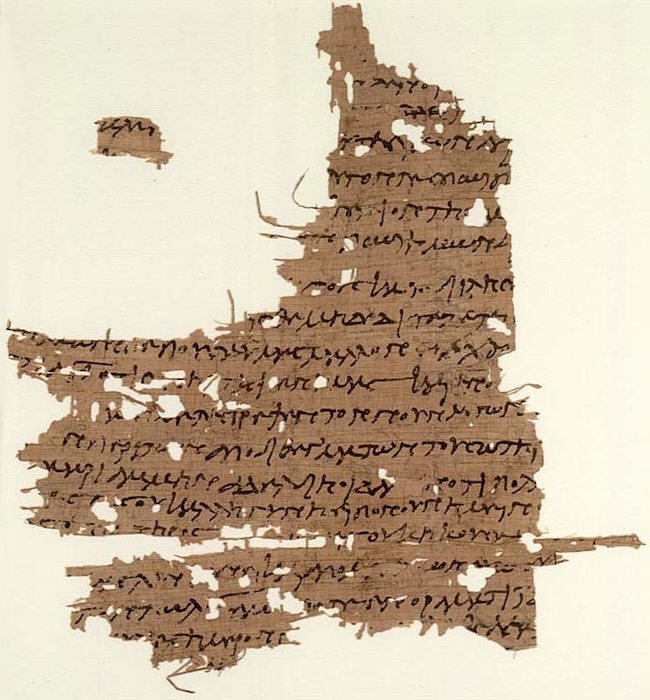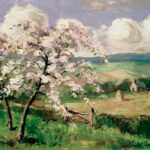I had the pleasure of spending some beautiful time in the South of France last summer, and truly, it is such a beautiful place there. There is a gentleness and lightness to the energy in this part of the France, with a sense of freedom, romance and undeniable aura of mysticism and femininity.
It feels quite different from other places of France, and I was suprised at how immediately I fell in love with it, and how mystically romantic my time there was; though truth be told, I am quite romantic anyway, so to me personally everywhere is love, is beauty, is meaning – because life is art, love is art, romance is a state of mysticim where we dissolve the boundaries and surrender to the curiosity of the unknown yet to be found.
There is a freedom there breathing the air; and love feels like freedom, and truth too frees us, it is a freedom. Truth has a certain note to it, sound to it, clarity to it, and when one is attuned to this very specific note, one knows when it’s heard because one knows how it feels. The whole body feels it also.
Swimming in the rain, walking barefoot on the hidden cobblestone streets, I was wrapped in a private lover’s cocoon of gentleness and mysticism. And while this part of France has many new structures, looks sparkling and new and quite fancy, there is also an undeniable almost ancient feeling, an ancient voice. It’s like something seeks us or desires us to reveal itself.
So it was no surprise to me to learn of the legends that it was upon these lands that Mary Magdalene lived for the rest of her life, and shared her teachings of Christ. Of course, these are only legends, but if one truly feels into the energy of these places, one would know – here love lived, here truth lived, here deep mysteries and teachings of the heart still live in the soil and in the air.
Last time I took you with me on a deep exploration with the Gospel of Thomas and its deep mysticism and spiritual teachings about unity and oneness; and today, inspired by my travels and beauty of France, let’s explore the mysticisim of the Gospel of Mary, also known as the Gospel of Mary Magdalene, and her main teaching on how salvation comes only through the inner spiritual knowledge and inward pathway.

Vincent van Gogh, Boats at Saintes-Marie, June 1888
According to an ancient French legend, Mary Magdalene, also known as Mary of Magdala, landed in a small boat on the shores of Saintes Maries-de-la-Mer (Holy Maries from the Sea) in the South of France around 42 CE, along with a number of early Christians. Although there are many variations on the legend and who exactly was in the boat, according to the most commonly held tradition, Mary Magdalene then took refuge in the Provence region in the South of France where she carried Jesus’s teachings and shared deep wisdom that resonates still today.
Her presence is deeply felt and embedded into the fabrics of the region, as are her teachings, and it is believed that this is where she built her church sharing Christ’s teachings. She eventually retreated to the cave of La Sainte-Baume, where she spent thirty years in prayer and meditation until the rest of her life.
Today, you may visit the church and grotto (cave) on the hills of Sainte-Baume where you may also see what is said to be her relics and skull.
While the truth and origins of these tales may be un-provable, Mary Magdalene became one of the most revered saints in France. Churches dedicated to her abound throughout the country and the legend of her arrival in the South is accepted throughout this enigmatic region.
Mary Magdalene is also known as the Apostle of all Apostles, which is a title given to her quite early on in the church, because she was more widely known as the first to discover the tomb, witness Jesus’ resurrection, and then bring the message to the other disciples. Many also consider her to be the one, or the main one, who started Christianity – as she was said to be the first to witness the resurrected Jesus, i.e. Christ.
After the resurrection the disciples spread out to share the teachings of Christ; we know Thomas reached all the way to India for example, and we know that all were executed for their faith and teachings, except John who died of natural causes, and he was also the one who cared for Jesus’ mother Mary and he sheltered her in his home just as Jesus asked of him as his beloved disciple.
Not much is known about Mary Magdalene, but it is widely accepted that she did indeed end up in Provence in France and stayed there teaching and living in the cave after for the rest of her life. Scholars believe that some of the main teachings of Mary Magdalene focused on inner transformation, mental clarity, being in service to others, recognizing the divine spark within, and spreading the words of Christ about love and the deep wisdom he shared.

Gospel of Mary, discovered in 1896. P. Oxyrhynchus L 3525, Papyrology Room, Ashmolean Museum, Oxford. 120-180 AD.
The Gospel of Mary, also known as the Gospel of Mary Magdalene or the Gospel of Mary of Magdala, is an early Christian text discovered in 1896 in a fifth-century papyrus codex written in Sahidic Coptic. It is believed to be written in the early 2nd century, and we only have less than half of it discovered, as many pages are still missing.
As of today, there is no complete copy of the Gospel of Mary that is known. Fewer than eight pages of the ancient papyrus text survive, which, as I mentioned, means that about half of the Gospel of Mary is lost to us, or at least, not known to us.
And yet, even within these few pages we find a richness of spiritual and esoteric wisdom and a beautiful new perspective on Jesus Christ’s teachings. This is important because only few of the early Christian writings have survived, and the Gospel of Mary and the Gospel of Thomas are of these.
Early Christianity sounded more esoteric, and focused on the inner development; it was more focused on the inner pathway, esoteric knowledge, inner spiritual knowledge, and even alchemical knowledge. But if one actually understands the essence of Christ’s teachings, one would very clearly see it is about the inner pathway, consciousness and inner development – this is why he points to the heart.
All roads will inevitably lead you back to yourself, to your within.
Jesus himself did not write any of these scriptures, whether canonical or not; so all of our understanding or portraits of his teachings reflect the perspectives of those who wrote the texts, and this is why early Christian texts such as the Gospel of Mary and the Gospel of Thomas are important.
Jesus’ teachings were oral in nature, and as such, they were passed down orally also. Naturally, people did not repeat everything that he had said and did, nor did they repeat everything they heard of him neither, but only what they considered important or resonate with them at those moments. His parables and his sayings, known as aphorisms and logia, were often so striking and memorable, that they were repeated again and again, and re-written and re-interpreted. For example, a saying like “blessed are the poor” was quite remarkable, which is why we see it in the main gospels through different perspectives and wording.
All the Christian writings discovered, whether canonical or not, are valuable in their own ways, because they give us glimpses of Christ’s oral teachings, but it would be of course quite ignorant and historically incorrect to assume they reflect the full breadth of early Christian interpretation of that tradition; because as I mentioned, since his teachings were oral, very little of it must have been recorded and it would have still come through the interpretation of the writer or whether or not it even resonated to begin with, in order for the writer or disciple to have even written it.
And while the recent discoveries of gnostic gospels such as the Gospel of Mary and the Gospel of Thomas fill in interesting and important gaps, I believe their main significance is that they actually show how diverse and mystical and esoteric the early traditions were from what many people think of today. I am someone who loves learning, and seeing various perspectives from past traditions. As a mystic myself, I approach all through the openness and love for the discovery; and as someone who loves old books and old pages, which holds the sacredness of someone’s emotions, thoughts, faith and understanding, I love getting my hands on something old and mystical. I love being mystified, and I love exploring and learning; so if you are like I am, these texts may offer you an exciting quest. There is always something to learn, reflect on or deepen into.
One of things I found deeply meaningful and interesting, is that in the Gospel of Mary, as I’ll share below, God is referred to as Good. It is the divine realm, God’s realm, the realm of goodness that lives within us and is ever present. The kingdom is not in the sky nor sea, God’s realm is already present within oneself and in creation. It isn’s something to view as punishing or scary, it is something to love and find the good within you also; shedding off all inner limits, borders, critics, judgments, shames, guilts, and just falling deeply into the love that holds us in its hands even when we ourselves may not be reaching or opening our palms towards it to be held.
In God’s hands we all are always; in the one whose face we may never see nor know fully, but know of it just like we know of the sun because of how a flower grows, how our skin is touched by warmth, how ice melts and how water nourishes us, and how difference angles and nuances are seen by the way the light shifts, how the hands of dusk hold the sunset and the hands of dawn hold the sunrise and kiss the sunset, and how the moon too offers herself to be seen by us because of the sun, her beloved.
And now, my dear readers, enough with my own mysticisms, and let’s dive into the Gospel of Mary.
The Gospel of Mary Magdalene
There are beautiful and deeply spiritual and meaningful passages we may find in the Gospel of Mary that we may reflect on, and perhaps even learn from; and today I’ll share with you a couple ones that I find significant.
In the Gospel of Mary we see Christ teaching Mary and the disciples that inner spiritual knowledge is the path to salvation.
For those interested in the scripture reading, I would suggest the writing and analysis by Karen King on the Gospel of Mary, and will include the specific books and other recommendations at the end. The excerpt below come King’s translations of the manuscript.
In Papyrus B«rolinensis 8502,1, we find that the first six pages are missing, and then the text opens to a conversation about the nature of matter.
“… Will m[a]tter then be utterly [destroyed or not?”
The Savior replied, “Every nature, every modeled form, every creature, exists in and with each other. They will dissolve again into their own proper root. For the nature of matter is dissolved into what belongs to its nature. Anyone with two ears able to hear should listen!”
In this passage we see how Christ says that matter has no form or qualities of its own, it is simply the substratum that is subject to being formed or produced. He mentions that everything will dissolve back to its own proper root. He doesn’t take a clear position whether the natural state is formlessness or nothingness – because, again, the path is inward and the teaching is to seek within and realize yourself – but he does state very clearly, “anyone with two ears” should realize that matter will return to its roots because essentially, the material realm is entirely destined for dissolution, it is temporary, and therefore, the material has no ultimate spiritual value.
This points us towards understanding that spiritual value and abundance comes from spiritual development, and not from gaining material riches – it is about the kind of person we choose to be and the values we live by.
These are all things we know of, but what makes this passage interesting and significant is that we see conversations about the nature of matter, which shows Christ’s teachings about consciousness also; but it also sounds very philosophical and similar with Plato’s discussions on the nature of matter also. There are also no talks on some horrible judgment days or punishments – it is all about the right living, but it’s about you and your own evolution of consciousness and the kind of life you will choose to live and reside in. Become the frequency on heaven on earth and you live in heaven; live in self imprisonment of lower urges, and that would be the reality, whether here or somewhere else.
Next we move into the nature of sin and the Good.
‘Then Peter said to him, “You have been explaining every topic to us; tell us one other thing. What is the sin of the
world?”
The Savior replied, “There is no such thing as sin; rather you yourselves are what produces sin when you act in accordance with the nature of adultery, which is called ‘sin.’ For this reason, the Good came among you, pursuing (the good) which belongs to every nature. It will set it within its root.” Then he continued. He said, “This is why you get si[c]k and die: because [you love] what de[c]ei[ve]s [you]. [Anyone who] thinks should consider (these matters)! “[Ma]tter gav[e bi]rth to a passion which has no Image because it derives from what is contrary to nature. A disturbing confusion then occurred in the whole body. This is why I told you “Become content at heart, while also remaining discontent and disobedient; indeed become contented and agreeable (only) in the presence of that other Image of nature. Anyone with two ears capable of hearing should listen!”
What we see and understand very clearly in this translation is that according to these scriptures there is no such thing as “sin” in the way modern day understandings may be – it is merely something that happens when we stray from our true selves and divine essence and sacrifice this for the lower urges of our selves.
What these descriptions of the nature of sin hint at is that Christ’s teachings on this topic were primarily concerned with orienting the soul towards God.
We also see that it is only the soul infused with the spirit that carries what it really means to be a human being. Since matter will eventually dissolve back to its constituent nature, the material world cannot be the basis for determining good and evil, right and wrong. In this text, it seems that what is known as or referred to as sinfulness of the human condition is the estrangement from God; and that one should be concerned with strengthening the spiritual self and the spiritual core within, being of ethical character, because this is the eternal, real, immortal self.
In this text we also see that an overattachment to the material is what leads people to sicken: “for you love what deceives you”. The material or lower urges is what often deceives people, as well as their egos, and these are the sources of disturbances on mental and emotional and physical and spiritual levels. This is why we see the importance of things like “follow the heart” and how the heart is only what sees the truth – we see this in tales even such as The Little Prince – because if one seeks truth, it is the only the heart’s eyes that can see it.
We also see God referred to as the Divine Good within – it is the Divine Good that we find as we turn inward towards self discovery and self realization. When people turn towards the good, which is the image of the divine reality, confusions may dissolve and they’ll be set free; the clarity of truth will reveal itself.
The content of these scriptures essentially lead the reader inward – towards stability, power, and freedom of the true self; so that the soul is set free from the false powers of ignorance, greed, etc. In this way, the structure of the Gospel of Mary conveys the same message as Christ’s teaching:
“Acquire my peace within yourselves\… For the child of true Humanity exists within you. Follow it! Those who seek for it will find it.”
We see that Divine realm or Divinity isn’t a remote heaven or hell; the Divine realm and Divine kingdom is that which is imminent to one’s true spiritual self. It’s essentially a return to that substance dependent on grasping that simple yet very subtle truth that this here as the material realm isn’t real – it is this, right here in our chest, our heart, that is the real.
According to this section of this Gospel, the Savior’s final message to his disciples is that he urges them not to look in the material realm surrounding them but to turn to their true spiritual selves – and this is what will liberate them.
No amount of external rules or teachings or following rituals of any kind will ever be a substitute for the inner spiritual knowledge and inner understanding – and it is only this that returns the human being to the Divine.
Christ then bids farewell to the disciples, who all break out in tears terrified that their fate would be the same as his, and they too will be physically executed; all cry, except Mary. For it is only she who understands the true message of the Savior; that this physical realm isn’t what matters, and there is nothing to fear, the soul is eternal.
It is this truth that allows the transcendence of the physical limitations – because once a person truly settles into this truth, fear too is transcended, and any previous physical limitations that may have stopped a person from truly shining in their true essence and truly living the life they desired in their soul and spirit, will now be dissolve; and they can liberate themselves from the physical trappings such as fear, or borders related to judgments towards other people.
Next, in script BQ 8502, Mary begins to instruct Peter and the rest of the disciples on the secret teachings that were revealed to her in a vision by the Savior,
Peter said to Mary, “Sister, we know that the Savior loved you more than all other women. Tell us the words of the Savior that you remember, the things which you know that we don’t because we haven’t heard them.” Mary responded, “I will teach you about what is hidden from you.” And she began to speak these words to them.
She said, “I saw the Lord in a vision and I said to him, “Lord, I saw you today in a vision.” He answered me, “How wonderful you are for not wavering at seeing me! For where the mind is, there is treasure.”
I said to him, “So now, Lord, does a person who sees a vision see it <with> the soul <or> with the spirit?
The Savior answered, “A person does not see with the soul or with the spirit. Rather the mind, which exists between these two, sees the vision an[d] that is w[hat …]”
The following pages, from 11-14 are missing, and then we move into a description of the rise of the soul.
Mary is recounting the Savior’s revelation about the soul’s encounters with gatekeepers or powers who seek to keep it bound to the physical trappings of this world through things like darkness, wrath, power, desire, judgment, ignorance, etc. Things like ignorance and judgments stop the soul’s ascent by challenging its nature and keeping it trapped in its evolution and rising. For those of who familiar with esotericism and consciousness evolution, these passages will sound very familiar. You can read the scripture on your own if of interest to you.
What I find interesting in her initial response in the cited text above is that when she shares her vision of Christ, he answers her by saying, “Blessed are you for not wavering at seeing me. For where the mind is, there is treasure.” The text then breaks, so we can’t quite see what’s next, but the significance of these words is that one sees with the mind rather than soul and spirit, which is why it is important to have clarity of mind, so that our perception too is clear.
We can’t see nor perceive anything we aren’t in resonance with. This is why inner development is so important, because you need to first clear your inner windows of sight, open up the inner awareness doors, attune yourself, and only then you can perceive something of higher energy.
After Mary describes the rise of the soul process to the disciples, a teaching that was given to her by Christ, she is met with criticism from both Andrew and Peter,
Andrew responded, addressing the brothers and sisters, “Say what you will about the things she has said, but I do not believe that the S[a]vior said these things, f[or] indeed these teachings are strange ideas.
Peter responded, bringing up similar concerns. He questioned them about the Savior: “Did he, then, speak with a woman in pri- vate without our knowing about it? Are we to turn around and listen to her? Did he choose her over us?”
Then [M]ary wept and said to Peter, “My brother Peter, what are you imagining? Do you think that I have thought up these things by myself in my heart or that I am telling lies about the Savior?
Levi answered, speaking to Peter, “Peter, you have always been a wrathful person. Now I see you contending against the woman like the Adversaries. ‘For if the Savior made her worthy, who are you then for your part to reject her? ‘”Assuredly the Savior’s knowledge of her is completely reliable. That is why he loved her more than us. Rather we should be ashamed. We should clothe ourselves with the perfect Human, acquire it for ourselves as he commanded us, and announce the good news, not laying down any other rule or law that differs from what the Savior said.
Andrew and Peter are not too pleased with whatever Mary shares, though we can probably understand why they think the rising of the soul things are strange things; but what’s more significant here is that Peter is not too pleased that it is she who has this knowledge and that she has received this from Christ. How is she more special than him?
Thereby, as if almost immediate, whatever Mary had been speaking of so far – about non-judgment etc. – it literally went from one ear and out the other. This is why perception matters, and why even when things are staring us in the face, we may still not perceive them, nor even know they’re there. In mysticism we learn that all truth is already out there, all answers are already out there – we just need to have the eyes to see them.
As a side note, we’ve seen the tension in the relationship between Mary Magdalene and Peter in the Gospel of Thomas also – and – we’ve also actually seen it in the New Testament, because according to the four canon gospels it was Mary Magdalene who witnessed the resurrected Jesus first, while in Paul, he mentions it was Peter who discovered the tomb and the resurrection first. So for those of you who like diving into research, this could be an interesting point to consider as topic. Now back to the text here.
Peter’s seeming jealousy in this moment clouds his own opportunity for growth and awareness further and limits his ability to perceive the teachings; this is why he hasn’t received them. In reality, all were given all, but not all received it nor perceived it when it was given to them. There is also the big gender thing too, for Mary was a mere woman, and in those times women were seen as lower; so the fact that she could be receiving something more than him from their beloved Savior created anger and jealousy in him.
We see how Levi, who is the other name for the disciple Matthew, stands up and says not to question these visions because if Christ has given them to her, who are we to question it or judge it?
And that’s precisely it – after all that was shared, or revealed, about the rising of the soul and how the powers of ignorance and judgment hold us back and are detriment to our growth, here we are, yet again, 2000 years later still judging, still not getting it, still being ignorant, angry, blaming others, fighting and bickering and separating ourselves from ourselves and from one another.
No one can walk our path for us. There are no quick fixes, no short cuts. We have to clear our view, rise in awareness, so that we can allow ourselves to perceive that which we haven’t been able to.
This is why you shouldn’t throw old books, you shouldn’t even “judge nor criticize” books, because perhaps you are just not able to perceive it yet; perhaps in few years time you can re-read that book, that article, re-listen to an old lecture, re-visit a place, and suddenly it’s as if it’s a new world, a new experience, suddenly you understand what the book was about for you.
It’s not about right or wrong, it’s about perception; and each time we walk along the circling staircases, a new vision we’ll see, even if it’s the same staircase. As we grow within, as our consciousness expands, a new world we enter and experience ourselves through externally also.
The importance of the inner spiritual knowledge is what is highlighted in these early Christian writings such as the Gospel of Mary, and that’s something we see universally in all esoteric and spiritual teachings, regardless of what part of the world it comes from.
The Gospel of Mary translations that I shared today are from Karen King’s book, but other recommended readings on this topic for those of you interested are:
Meyer – The Nag Hammadi Scriptures – 978-0061626005
King – The Gospel of Mary of Magdala: Jesus and the First Woman Apostle – 978-0944344583
Tuckett – The Gospel of Mary -978-0199212132
De Boer – The Gospel of Mary: Listening to the Beloved Disciple – 978-0567082640
Brock – Mary Magdalene, The First Apostle – 978-0674009660

For more of my writings, browse through my Art of Love.
If you wish to support me and my work, you may do so by sharing it or donate here. For personal readings with me, you may visit my Offerings.
Your support means so much to me! Thank you wholeheartedly!




